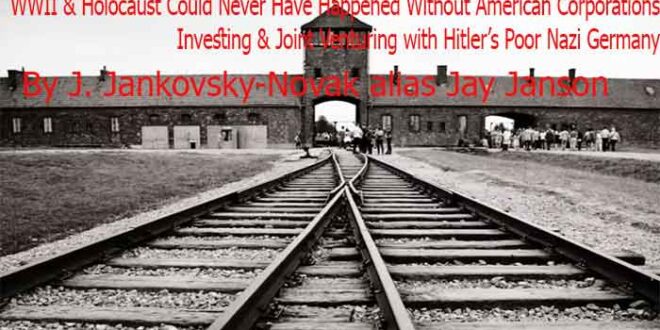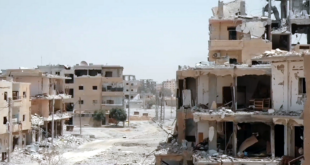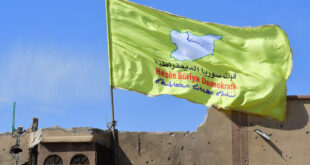Hitler and Mussolini Permitted To Go To War on the Side of a Spanish Fascist Revolt With Merciless Bombing of Republican Spain During the Spanish Civil War July 1936-April 1939
The fascist led military uprising in Spain was set to begin in the Spanish protectorate in Morocco so that control of Spanish Morocco could be achieved and forces sent to the Iberian Peninsula to coincide with the risings there. The uprising was led by a military group among whom General Francisco Franco soon achieved a preponderant role and would come to dictate the war. Franco immediately took control of the Canary Islands to which he had been assigned. Control over Spanish Morocco was expected as all but certain and indeed little resistance was encountered. The rebels there shot 189 people. [110]
German involvement in the Spanish Civil War commenced with the outbreak of war in July 1936, with Hitler immediately sending in powerful air and armored units to assist General Francisco Franco and his Nationalist forces. The Soviet Union sent in smaller forces to assist the Republican government, while Britain and France and two dozen other countries set up an embargo on any munitions or soldiers into Spain. On July 6 a Paris court even upheld the refusal of the Bank of France to make available to the Spanish Government its own gold — -£7,500,000 worth deposited in Paris since 1931. Nazi Germany also signed the embargo but simply ignored it. [111]
Unlike the US, which remained neutral, the Mexican Republic supported fully and publicly the claim of the Madrid government and the Republicans and refused to follow the French-British non-intervention proposals. Mexican President Lázaro Cárdenas saw the war as similar to Mexico’s own revolution. Mexico’s attitude gave immense moral comfort to the Republic, especially since the major Latin American governments—those of Argentina, Brazil, Chile, and Peru—sympathized more or less openly with the Fascists.
Mexico furnished $2,000,000 in aid [112] and provided some material assistance, which included rifles, food and a small amount of American-made aircraft such as the Bellanca CH-300 and Spartan Zeus that served in the Mexican Air Force.
Though German aid to Franco never equalled that given by Italy, which dispatched between sixty and seventy thousand troops as well as vast supplies of arms and planes, it was considerable. The day after Germany signed the Non-Intervention Agreement, 24 August 1936, Adolf Hitler told his war minister, Field-Marshal Werner von Blomberg, that he wanted to give substantial aid to General Franco. [114 By the end of the month, Adolf Hitler had sent 26 German fighter aircraft. He also sent 30 Junkers 52s from Berlin and Stuttgart to Morocco. Over the next couple of weeks the aircraft transported over 15,000 troops to Spain. This air transport was crucial for Franco, since the Mediterranean Sea was controlled by the Spanish government’s naval forces.[115]
Early intervention helped to ensure Fascists successes in the war’s initial stages. The training they provided to the Fascists proved as valuable, if not more so, than direct actions. From 29 July to 11 October the Germans transported 13,523 Moroccan troops and 270,100 kilograms of war material from Morocco to Andalusia; and it was Franco’s African forces, thus transported and supplied, which were a decisive factor in the war. (Hugh Thomas. The Spanish civil war.)[116]
Due to the international political climate at the time, the war had many facets and was variously viewed as class struggle, a war of religion, a struggle between dictatorship and republican democracy, between revolution and counterrevolution, and between fascism and communism. (Marcial Pons in Un Siglo de España) [117]
The Spanish Civil War saw a continuation of duplicit diplomacy and surreptitious support of fascism by the colonial-powered capitalist democracies, even though their citizens overwhelmingly supported the elected republican government of Spain.
Neville Chamberlain speech in the House of Commons (22nd February, 1938)
“Our policy has been consistently directed to one aim – to maintain the peace of Europe by confining the war to Spain. Although it is true that intervention has been going on and is going on, in spite of the non-intervention agreement, yet it is also true that we have succeeded in achieving the object at the back of our policy, and we shall continue that object and policy as long as we feel there is reasonable hope of avoiding a spread of the conflict. I do not believe that it is fantastic to think that we can continue this policy successfully, even to the end. The situation is serious, but it is not hopeless. Although it may be true that various countries or various Governments desire to see one side or the other side in Spain winning, there is not a country or a Government that wants to see a European war.”
The Republicans as well as receiving aid from the Soviet Union and Mexico, received fighting units of the International Brigades, composed of volunteers from Europe and the United States. [The International Brigades (Spanish: Brigadas Internacionales) were military units set up by the Communist International to assist the elected government of the Second Spanish Republic during the Spanish Civil War. It is estimated that during the entire war, between 40,000 and 59,000 members of over 40 nationalities served in the International Brigades, including 15,000 who died in combat.][118]
The war was a result of a polarization of life in Spain and abrasive political events during previous decades. On one side were most Roman Catholics, important elements of the military, most landowners, and a good many businessmen. On the Republican side were urban workers, most agricultural laborers, and many of the educated middle class. Their differences often found extremely passionate and vehement expression in parties such as the Fascist-oriented Falange and the militant anarchists.
Ernest Hemingway was the most prominent foreigner among the writers, journalists and actors that sided with the Spanish Republicans and traveled to Spain. Novelists like Hemingway George Orwell, and John Dos Passos wrote in defense of Spain’s Republican government troops as they battled General Francisco Franco’s rebel troops between 1936-39. However, history has sometimes forgotten the contributions of ordinary war reporters of many British and American newspapers that once championed Franco even as he was aided by Hitler and Mussolini.
Sir Paul Preston, an English historian and Hispanist, winner of multiple awards for his books on the Spanish Civil War tells us,
The bulk of the reporters became so committed to the Republic, partly because of the horrible things they saw such as the bombing of civilians, but even more so because they felt that what was going on in Spain was everybody’s fight. If fascism won in Spain, they felt the next thing it would be bombing Paris and London, which of course turned out to be true. [119]
George Steer, a special correspondent for The Times, wrote one of the most historically important reports of the war — describing the bombing of the Basque town of Guernica by Franco’s troops using Nazi planes in April 1937.
The whole town of 7,000 inhabitants, plus 3,000 refugees, was slowly and systematically pounded to pieces. Over a radius of five miles round, a detail of the raiders’ technique was to bomb separate caserios, or farmhouses. In the night these burned like little candles in the hills. All the villages around were bombed with the same intensity as the town itself, and at Mugica, a little group of houses at the head of the Guernica inlet, the population was machine-gunned for 15 minutes.
Steer’s superiors at the Times, however, didn’t much care for the anti-Fascist tone of his reporting, and he was let go. [120]
Steer’s dispatch also appeared in the Paris newspaper L’Humanité, attracting the attention of Spanish artist Pablo Picasso, who was living in Paris. Picasso immediately began working on a mural-size monochromatic painting, Guernica, depicting his countrymen “in an ocean of pain and death,” that he finished in 35 days. Picasso’s masterpiece has become a universal and powerful symbol warning humanity against the suffering and devastation of war.
Steer’s report was syndicated to The New York Times and then worldwide, generating widespread shock, outrage, and fear. There was coverage in other national and international editions as well. The Times ran the story every day for over a week after the attack. The New York Post ran a cartoon showing Adolf Hitler brandishing a bloody sword labelled “air raids” as he towered over heaps of civilian dead.
France and their on-hanging fellow European empires, the Dutch, Belgium, and Portuguese. Popular opinion, in the US, UK and France, especially after the dissemination of the news of horrific bombings like Guernica was overwhelmingly on the side of the Spanish Republic.
Foreign Affairs is an American magazine of international relations and U.S. foreign policy published by the powerfully influential select Council on Foreign Relations, a nonprofit, nonpartisan membership organization and think tank specializing in U.S. foreign policy and international affairs. Founded in 1922, the print magazine is currently published every two months, while the website publishes articles daily and anthologies every other month.
Early during the Second World War, only three and a half years after the end of the civil war in Spain, this important American foreign affairs magazine published by the Council on Foreign Relations, featured what can be read as an abject confession of US, British and French decisive support for fascism. In the featured article of its October 1,1942 issue, ‘Prelude to World War – A Witness from Spain,’ historian war-correspondent John T. Whitaker[121] begins with a damning conclusion, “Unless Goebbels[122] writes it, history will properly apportion the responsibilities for the murder of the Spanish Republic. Then it will have to be said that non-intervention and the arms embargo made the Fascist victory possible.”[123
J. Jankovsky-Novak aka Jay Janson spent eight years as Assistant Conductor of the Vietnam Symphony Orchestra in Hanoi and also toured, including with Dan Tai-son, who practiced in a Hanoi bomb shelter. The orchestra was founded by Ho Chi Minh, and it plays most of its concerts in the Opera House, a diminutive copy of the Paris Opera. In 1945, our ally Ho, from a balcony overlooking the large square and flanked by an American Major and a British Colonel, declared Vietnam independent. Everyone in the orchestra lost family, “killed by the Americans” they would mention simply, with Buddhist unaccusing acceptance. Jay can be reached at: tdmedia2000@yahoo.com .
End Notes
- Beevor, Antony. The Battle for Spain: The Spanish Civil War 1936–1939. (London, England: Weidenfeld & Nicolson (2006) [1982]). ISBN 0-297-84832-1
- Spartacus Educational, “Non-Intervention Agreement” https://spartacus-educational.com/SPnoninter.htm#breadcrumb] https://en.wikipedia.org/wiki/German_involvement_in_the_Spanish_Civil_War;
Hugh Thomas,. The Spanish civil war. (Random House Digital, Inc. 2001)
- Thomas (1961) pp. 637–638
- Hugh Thomas, The Spanish Civil War (2003) page 381]
- Antony Beevor, The Spanish Civil War (1982) pages 282-283
- Hugh Thomas, The Spanish civil war.
- Juliá Santos, Un siglo de España. Política y sociedad. (Madrid: Marcial Pons 1999), ISBN 84-9537903-1
- ]Thomas (2003), pp. 941–945; Beevor (2006), p. 157
- https://www.reuters.com/article/spain-civilwar/spain-civil-war-exhibition-probes-role-of-reporters-idUKNOA34258020070423
- “The Tragedy of Guernica,” HistoryNet https://www.historynet.com/13750686.htm
- With his colleague Jay Allen, of the Chicago Tribune, Whitaker covered the Spanish Civil War, where he was seen at several atrocities and, after one of the bloodiest events of the entire conflict, the Massacre of Badajoz, he managed to interview the person responsible for the incident, General Yagüe. He also interviewed Mohamed Mizzian, a Moorish general of the Nationalists, and reported on Mizzian giving two captured teenage girls, one found with a trade-union card, to some forty of his troops for mass rape. Whitaker described how Mizzian ‘smirked when I remonstrated with him, he said ‘Oh, they’ll not live more than four hours.’[quoting from Navarro, Vicente (July 19, 2006). “The Spanish Civil War, 70 Years On: The Deafening Silence on Franco’s Genocide”. Counterpunch. Archived from the original on July 20, 2006].
- Paul Joseph Goebbels, was Reich Minister of Propaganda of Nazi Germany from 1933 to 1945. He advocated the extermination of the Jews in the Holocaust. Goebbels and his wife committed suicide, after poisoning their six children with cyanide.
- John T. Whitaker, “Prelude to World War – A Witness from Spain”
Foreign Affairs Magazine, 10/1/1942)”it will have to be said that non-intervention and the arms embargo made the Fascist victory possible.”[https://www.foreignaffairs.com/articles/spain/1942-10-01/prelude-world-war.
 Eurasia Press & News
Eurasia Press & News




